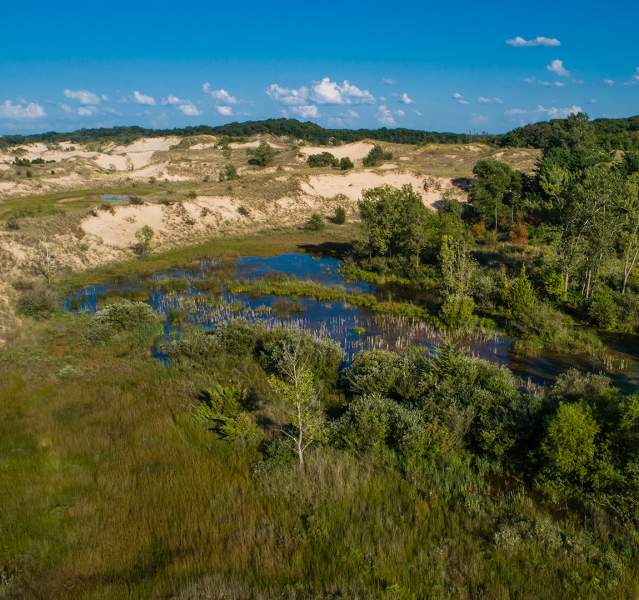Discover West Beach
West Beach offers a one-of-a-kind opportunity to spend a day in the sand and surf of Lake Michigan while enjoying a spectacular view of the Chicago skyline. The park provides ample parking, picnic shelters with charcoal grills, and even a historic bathhouse.
But that’s just the beginning. This special place is also home to rare ecosystems highlighting the incredible biodiversity of the Indiana Dunes. From prickly-pear cactus and jack-pine trees to the federally-threatened Pitcher Thistle, West Beach is a showcase for the astounding array of plant life that is the geological legacy of the last ice age. Climbing the steps of the Succession Trail, visitors can take in sweeping vistas and get a first-hand look at the key role plants play in the formation of the dunes. West Beach also encompasses nearby Long Lake, and a number of rare, fragile wetlands known as pannes. The waters and vegetation here make West Beach a key waystation for migrating birds, and a birdwatcher’s dream. So whether you are looking for a place to relax with family and friends, or want to explore the natural wonders of the Indiana Dunes, West Beach is a must-see!


Loop 1—Dune Succession Trail
.9 miles
Loop 1 gives visitors a first-hand look at the natural forces that shape the Indiana Dunes. The trail winds and climbs through beach, foredune, woodlands, dunes, and grasslands, showcasing the varying stages of ecological succession. Loop 1 is also called the Diana of the Dunes Dare. Named for an early advocate for the dunes who lived here during the early 1900s, the Diana Dare will give you a unique insight into a local legend and provide a fun hiking challenge, complete with a dramatic staircase leading to majestic views of the dunes and Lake Michigan.
Take the Diana of the Dunes Dare and hike in the footsteps of the daring and free spirit of Alice Mabel Gray. Learn of her life as you explore the natural wonders of her beloved Dunes terrain.
Visit our online shop to grab Diana of the Dunes souvenirs. We dare you!
Loop 2—West Beach Trail
1.2 miles
Loop 2 is perfect for visitors who want to experience the diversity of ecosystems that make up the dunes. The sandy trail leads through the trees and grasses of an oak savanna, and eagle-eyed hikers are likely to spot prickly-pear cactus sprouting along the way. The trail also runs parallel to Long Lake, an ideal habitat for migrating birds and waterfowl.
Hikers may be surprised to find the sandy trail is so flat: this is because much of the area the trail covers was once mined for its abundant sand. Abundant parking makes this an easily accessible trail.
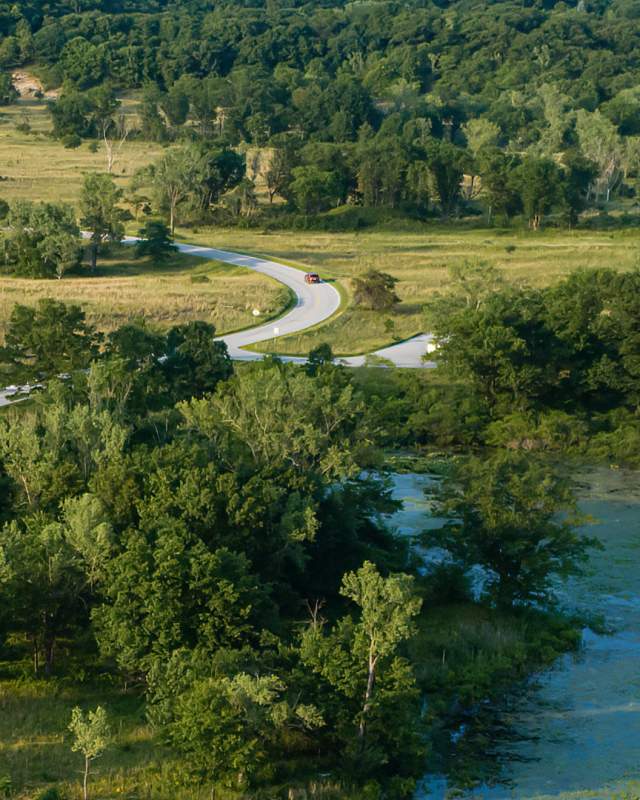
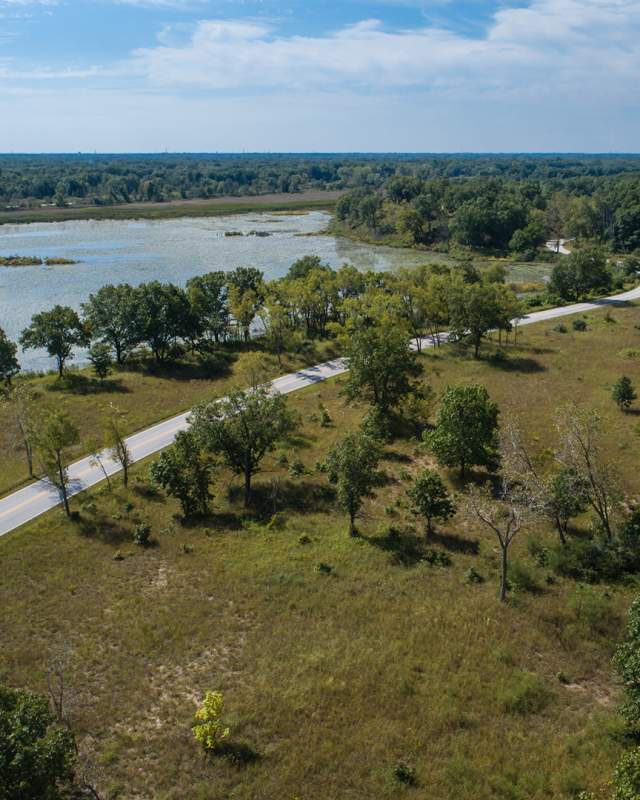
Loop 3—Long lake Trail
2.2 miles
Loop 3 is the longest of the West Beach trails at just over two miles, and it provides excellent opportunities for birdwatching at Long Lake, including elevated viewing platforms. The trail is considered moderately difficult, its elevation changing as it climbs and descends with the dunes. Loop 3 is a trail of great variety, with boardwalks, stairs, and sandy paths that take hikers through the oak savanna, along the shore of Long Lake, and through the dunes.
Paved Walk Among the Dunes
.2 miles
With a paved walkway leading from the parking lot to the bathhouse, West Beach offers a fully wheelchair-accessible way to experience the beauty of the dunes. The walkway is almost a quarter-mile long and provides fantastic views of Lake Michigan and the nearby dunes and wetlands.

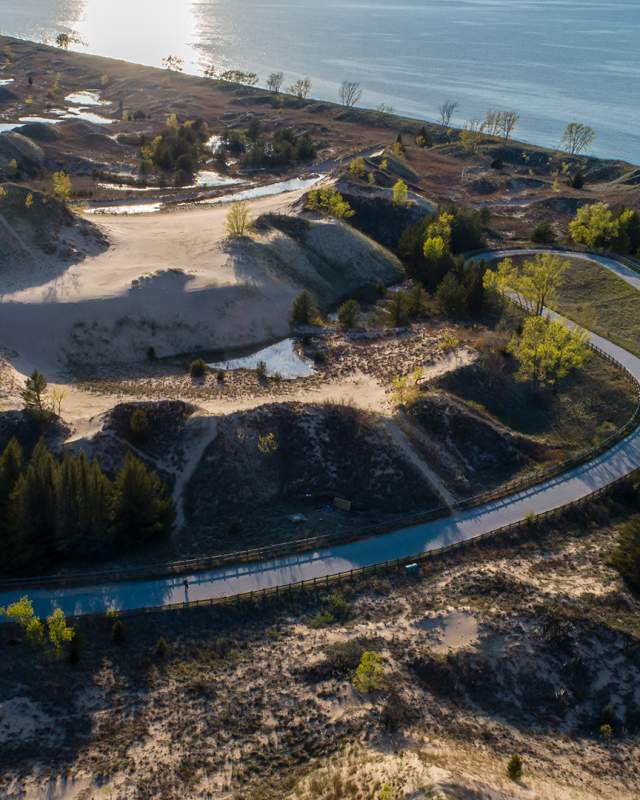
The Geological Story of West Beach
The landscape of West Beach is the living legacy of both the mighty geological forces of the last ice age and the massive strength of heavy industry. When the towering glaciers dominating the midwest retreated northward thousands of years ago, the sediment they left behind eventually became the sandy beaches, just as the ice melted and became the Great Lakes.
The wind and the waves of the lake contributed to the erosion begun by the glaciers, continually shaping the shoreline and piling up the sand that formed the Indiana Dunes.
These same forces produced the incredibly rare wetland formations known as pannes. Pannes are areas where the wind has “blown out” the sand all the way down to the water table, leaving a fragile depression that retains water. There are only approximately 50 such pannes on earth—and incredibly, six can be found at West Beach in the Indiana Dunes National Park.
Dunes, Lakes, and Pannes
Beautiful Birds of West Beach
Because of its location near both major urban and industrial areas, West Beach is a vital waystation for migrating birds. The National Audubon Society has designated it an Important Bird Area, which means it is crucial to birds’ survival. As birds migrate north and reach the formidable waters of Lake Michigan, areas like this provide a place to rest and take shelter on their journey. The wetlands and nearby Long Lake can spot rare waterfowl like the Red-throated Loon or the endangered bittern, and visitors have even reported spotting the American White Pelican and Tundra Swan here.
The trees of West Beach also provide an excellent opportunity for bird watchers. Spotters have seen everything from the Northern Gannet, Townsend’s Solitaire, and Bohemian Waxwing, to the Long-eared Owl. Be sure to stop by the Visitor’s Center to pick up a comprehensive guide to birdwatching at West Beach.
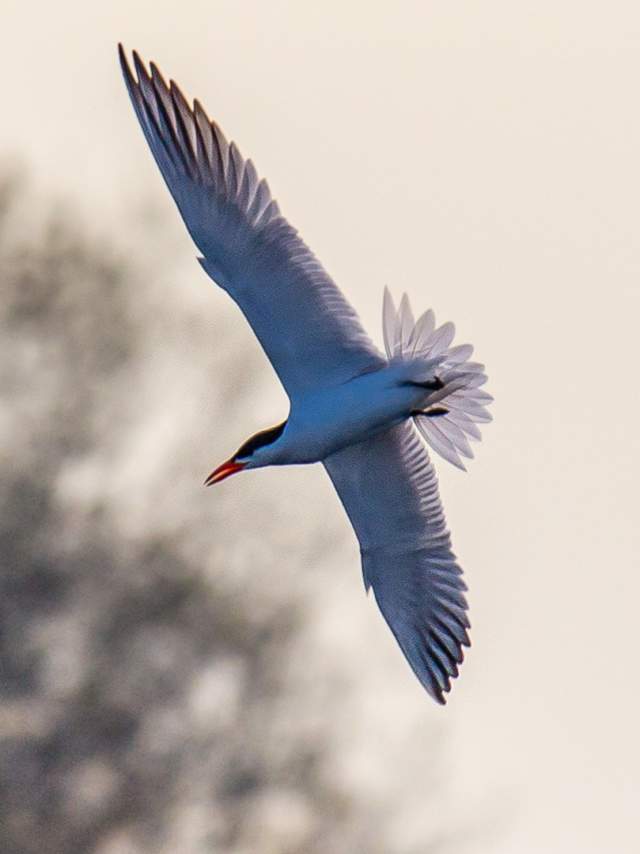
Bird You May See
Grab a copy of this self-led birding tour, and visit six of the Indiana Dunes area birding recommended by local birders. Spectacular birds are waiting for you. Can you spot 'em all?
Incredible Plants of West Beach
When the glaciers of the last ice age moved across the continent, these giants brought seeds with them. As the glaciers receded, some of these seeds took root, making the Indiana Dunes one of the most biodiverse areas on Earth. Plants that commonly thrive hundreds of miles away from here thrive in this biological crossroads. Plants from the more arid south live alongside those from the northern boreal tundra, and the grasses of the western plains meet the hardwoods of the eastern forests. And nestled in the wetlands, one can even find carnivorous plants like the bladder-wort living in the fragile pannes.
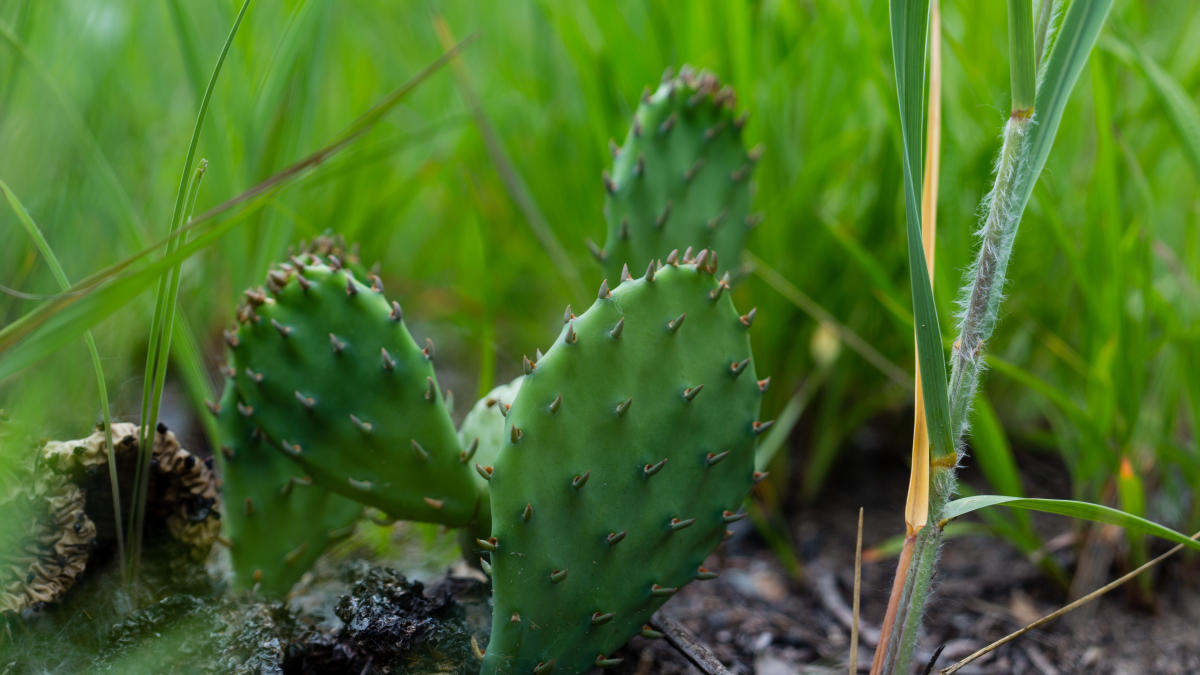
And the vegetation here doesn’t just find a home in the dunes: it is essential to the dunes’ survival, as well. At the end of the nineteenth century, famed University of Chicago ecologist Henry Chandler Cowles, one of the first scientists to study this region and champion its preservation, documented how one community of plants could survive long enough to establish the conditions necessary for another to follow in its place. As plants provided precisely what was necessary for their own replacements, Cowles recognized they progressed in a chain towards what he called a “climax formation,” a stable plant community that persists until outside forces disrupt it.
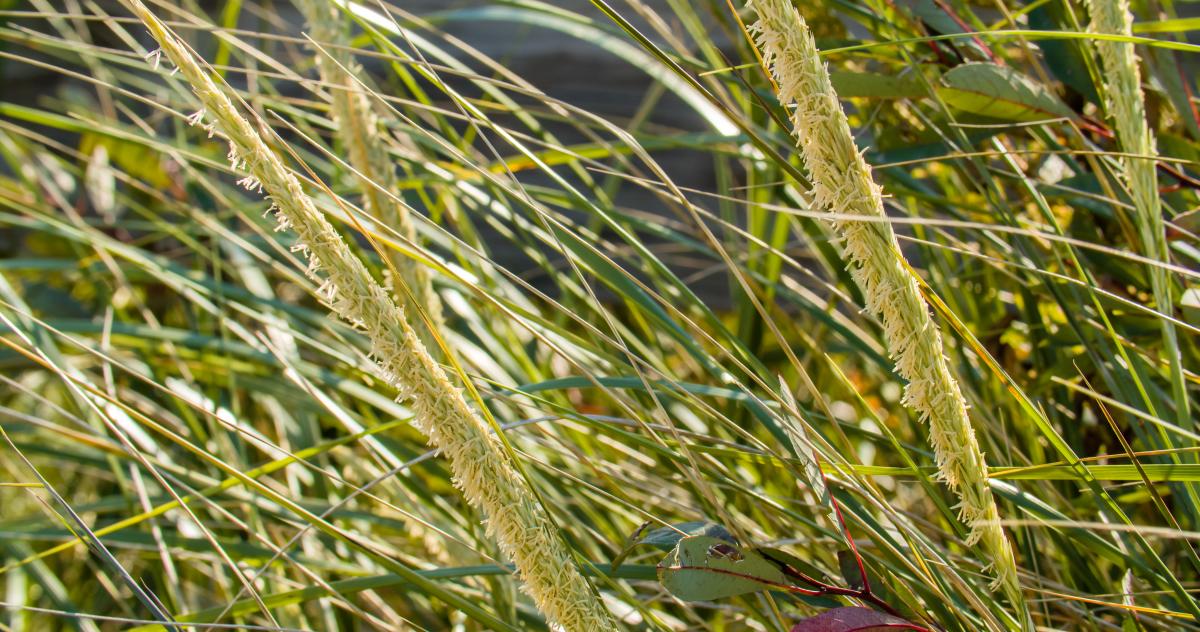
At West Beach, visitors can trace plant succession beginning with the grasses growing on the sunlit beaches. Marram grass is commonly found in the dunes of the Great Lakes, and like other grasses, it has an elaborate interconnected stem system under the surface called a rhizome. The sand helps to shield the plants from the elements, and the extensive rhizomes of these grasses help to stabilize the sand dunes. Climb the steps of the succession trail to watch how these humble grasses give way to shady cottonwood and pine trees. These trees further anchor the sand and ultimately create the conditions for the climax formation of oak forests rising high above them.
Plants You May See
The Indiana Dunes is one of the most biodiverse national parks in the entire country. Over 1,100 flowering plant species and ferns make their homes here. How many flowers can YOU find?
Mining Sand
Wind and water are not the only forces that shaped West Beach. The same sand that makes the beach such an attractive destination today was an incredibly valuable commodity following the Great Chicago Fire of 1871. Because sand was an important building material, West Beach became the center of one of the largest sand-mining operations in the region.
From the viewing platform of the highest stairs of the Dune Succession Trail facing west, you can see the large main parking lot that occupies the land where the sand-mines reshaped the dune ridge.
The stairs of the Succession Trail have over 250 steps. Be sure to wear comfortable shoes!
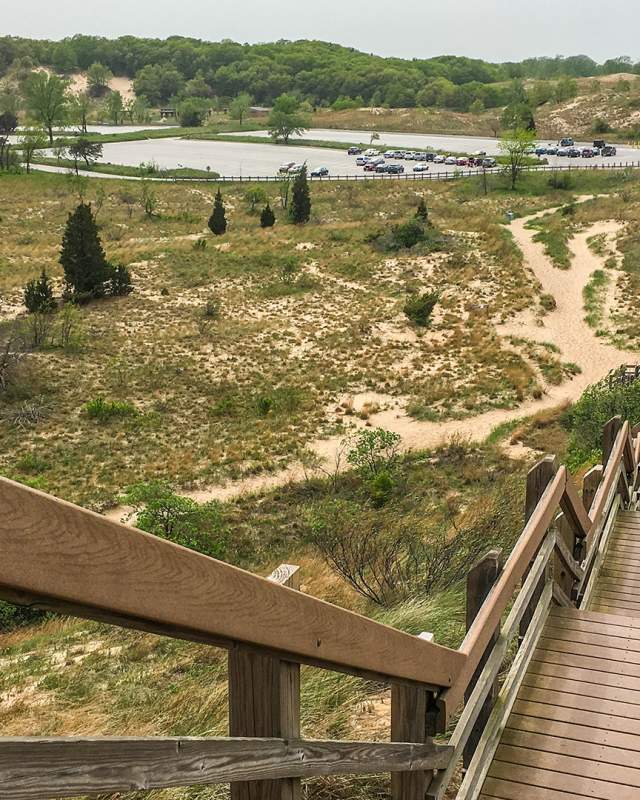
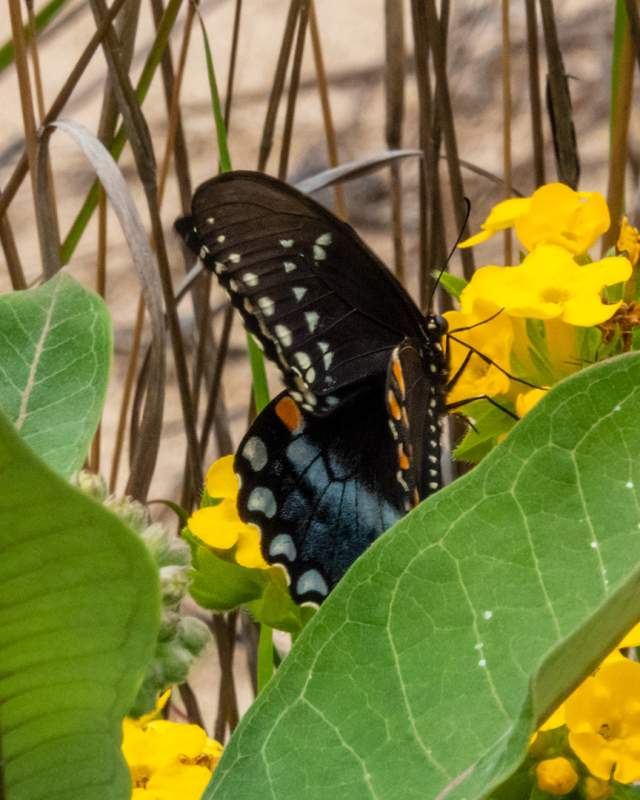
Pollination
The beautiful wildflowers that grow here attract a multitude of pollinators, including swallowtail and monarch butterflies. Look for the beautiful wild lupines and hoary puccoon: their vibrant blossoms are butterfly magnets!
Conservation
And as you admire the plantlife, you may spot thistle bushes sporting something that looks almost like a hair net! These humble-looking plants are the federally threatened Pitcher’s Thistle. It can take up to eight years for this plant to flower and produce seeds, and rangers and volunteers work hard to protect them from the goldfinches that are eager to dine on these delicacies.

How to Help
We are all responsible for protecting our parks for future generations. The Indiana Dunes, as a whole, is one of he most biodiverse areas in the United States. Here are some tips to help you limit your impact on the natural habitats in the dunes area.
Get Involved
Be the Change — Volunteer! Get more involved with the Indiana Dunes! There are many no-hassle, drop-in volunteer opportunities available for everyone. Just show up!
Love & Protect the Dunes
Each of us who visit the Indiana Dunes can also help protect natural heritage, biodiversity, and local culture by taking a few simple steps.
Plan Your Visit
- 376 N. County Line Rd.
- 219-395-1882
A bathhouse, a huge swath of sand, and a stationed summer lifeguard make this beach one of the most popular Lake Michigan spots. For inland fun, climb the 250+ stairs of the Diana of the Dunes…
What to Expect
West Beach has the largest parking lot in all of Indiana Dunes National Park. Year-round restrooms are available near the parking lot. The bath house has restrooms, showers, and lockers seasonally. Eight reservable covered picnic shelters are reservable and allow grilling. Grilling is not allowed on the beach.
Be Ready
Poison ivy can grow alongside the trail, and portions can become wet and muddy. Be sure to wear appropriate clothing and footwear. Bring along a reusable water bottle and snacks.
Be Safe
Mosquitoes and ticks can be a nuisance in the summer, so be sure to use Environmental Protection Agency (EPA)-registered insect repellents. Check yourself for ticks after your hike.
Be Responsible
Visitors must stay on designated trails at all times. We have created a video to help you learn about your role in enjoying the dunes area safely while minimizing your impact on the park.
